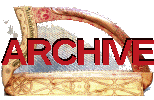

|
The Gaelic harp became extinct during the course of the 19th Century. However, there remained an awareness that the ancient Irish harp had been different from the new lever harps and pedal harps, and a few people experimented with wire strings from the first years of the 20th century onwards. Examples include James McFall around 1902 and Arnold Dolmetsch in the 1930s. However they generally tell us nothing about their stringing practice beyond the fact that they were using "wire" instead of gut.
With no established tradition to follow, string materials and gauges were copied from other instruments. Folk guitars strung with thin steel or phosphor-bronze strings led to the development of a wire-strung subculture of the "folk harp movement" from the 1970s onwards, with lever harps of modern design and construction strung with these materials.
At the same time some people, the best known being Jay Witcher in America, were building measured replicas of the historical instruments from first principles, and using historical accounts to guide stringing practice. This kind of work was greatly helped by harpsichord builders who provided a commercial source for historical brass music wire.
Because the design and construction of a harpsichord differs greatly from that of the Gaelic harp, the historical principles used by makers of replica harpsichords are of limited use to Gaelic harp makers. Instead, stringing decisions must be based on the inadequate historical and archaeological information.
The sturdy frame of the Gaelic harp and references to "great thick brass strings" implies heavy gauge strings at high tension: Robert Evans's Downhill harp replica was strung with yellow brass gauges from 0.52 to 1.10mm (0.020 to 0.043 in.) for the treble and mid range. On the other hand the reported delicate and sweet sound of the Gaelic harp can imply thin strings at low tension: Mike Parker's Queen Mary harp replica used 0.33mm (0.013 in) red brass for the whole treble and mid-range of the instrument. The wire fragment found by Bob Evans on the Ballinderry Fragments' 10th pin from the bass was 0.7mm red brass, so if this pin remains in its original position and the wire is not too corroded this might suggest a pleasant medium between these two extremes.
Whether light, heavy or middle gauge stringing is used, the most difficult area is often the bass range. On a harpsichord the bass strings are very long to allow relatively thin red brass strings to sound well. While the late "high-headed" Gaelic harps (such as the Sirr harp), have a similar shape with long bass strings, the shorter basses of the earlier low-headed designs tend to have intonation problems if strung in this way, as Christopher Warren found out when he tried to replicate the Trinity College harp:
|
“
I got my wire from Cathal Gannon, what he used for stringing harpsichords. I used the finest gauge to start with and found that this was not satisfactory down in the bass and put in thicker, although it was all right up in the treble... ...It may be the nature of the instrument, but if you have it any thicker it will be much too stiff and even as it is, if you look carefully, you can see that the wire is not tight enough for the pitch, because you cannot pull it straight or prevent it being wavy. The tone of the thick wire in the bass is poor... „ | |
Various methods of minimising or solving this "problem" have been tried; many modern harpmakers adjust the historical designs they are copying to lengthen the bass strings, or reduce the number of strings so reducing the bass range of the instrument. Others use the folk harp's modern phosphor-bronze or overwound bass strings, which are heavier and denser and can give a better tone at a shorter speaking length. The more historically minded have experimented with twisted strings, which appeared in the 16th century, but these do not give a great improvement in tone and there is no evidence that they were ever used on Gaelic harps in the 16th Century or earlier.
Ann and Charlie Heymann comment:
|
“
It is illogical to think that Irish harpmakers and players would create and utilise thirty strings if the bottom ones were poor sounding, and the instrument's prestigious reputation implies that all the strings had good tone. Assuming that the medieval clairseach did not suffer the poor bass sonority we experience today, could the problem perhaps be traced to stringing practice? „ | |
Their suggestion is that the references to gold and silver strings (see history) are not poetic license or exaggeration, but a reflection of historical stringing practice. Ann has successfully strung her replica Trinity College harp (by David Kortier) with the lowest 14 strings of various carat gold, and the upper strings of brass, producing a consistently good sound across the harp's considerable range. (Read Ann's article online.)
It is tempting to see a simple chronological progression, that the "low-headed" medieval harps used gold bass strings (as hinted in the medieval myths and legends); the "large low-headed" 16th and 17th Century instruments used silver bass strings (see for example the Zoilomastix); and the "high headed" instruments of the later 17th and 18th Centuries could be strung with brass right down through the bass. Certainly the physical forms of the three different types, which each define different ratios of string lengths across the instrument's range, allow and require three different approaches to stringing.
Simon Chadwick